How to Fix a Water-Damaged Phone: A Comprehensive Guide
Updated on
by Joseph Maxim
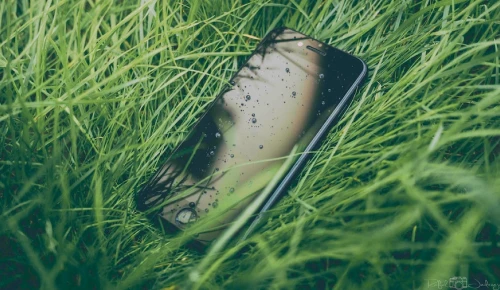
We’ve all been there. Lost phone in the pool when you didn’t realize you had a phone in the pocket, got wet in the rain with no umbrella, or just dropped the phone in the toilet. Yikes! We all understand that the role of cell phone is not limited to security purposes only. It also gives the user the feeling of security and also is the best way to communicate with our loved ones. Most of the phones in the market today are water resistant but this does not mean that when you put the entire phone in water it will not be affected.
Water damage can be among the worst damages that can occur to any smartphone which is rather distressing. But you may be lucky enough to prevent your device from being permanently damaged if acted on in the right time. Follow the steps below to repair a water damaged phone and more tips to enhance the process of repairing your phone.
1. Immediate Actions
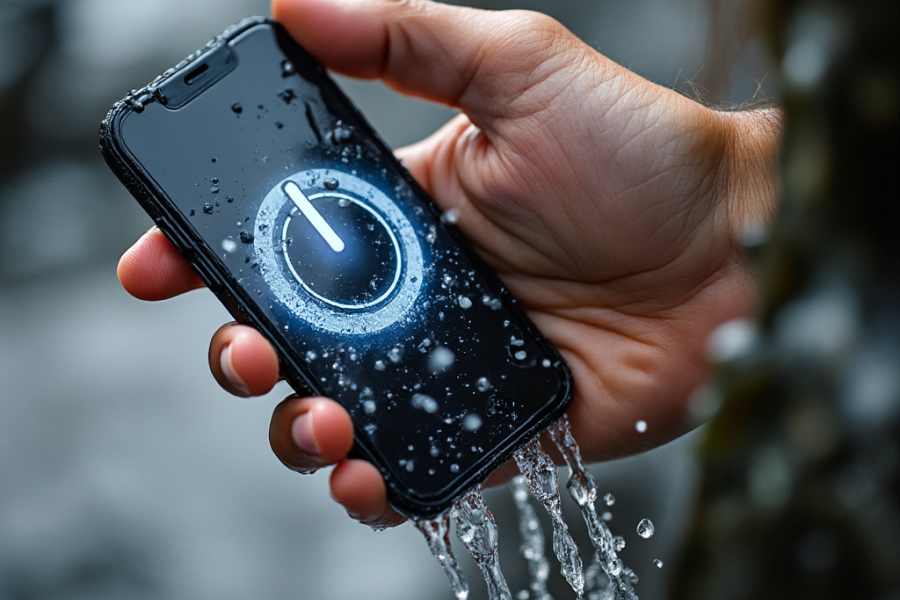
This is where timing plays a very important role especially when your phone gets wet. The longer a water gets in contact with the interior of your phone, the more damage it will cause that cannot be reversed.
-
Turn Off the Phone: If your phone is still on, then ensure that you switch it off as soon as possible. Water and electricity are a bad combination and when the phone is switched on, there is high possibility of wiring getting short-circuited, a condition that is irreversible.
-
Remove All Accessories: Remove all the items that can be removed from the phone; these include the case, SIM card, SD card, headphones, and charging cables. If your phone has a battery which is removable you should remove it as well since many of the newer models do not have this feature. This is because when the accessories are removed it is easier to dry the phone since there is no possibility of moisture being trapped.
-
Disconnect from Power: If your phone is charging, then unplug it at once. As a result of charging a wet phone, one is likely to be electrocuted, damage the internal components of the phone or even cause a fire outbreak.
2. Dry the Exterior
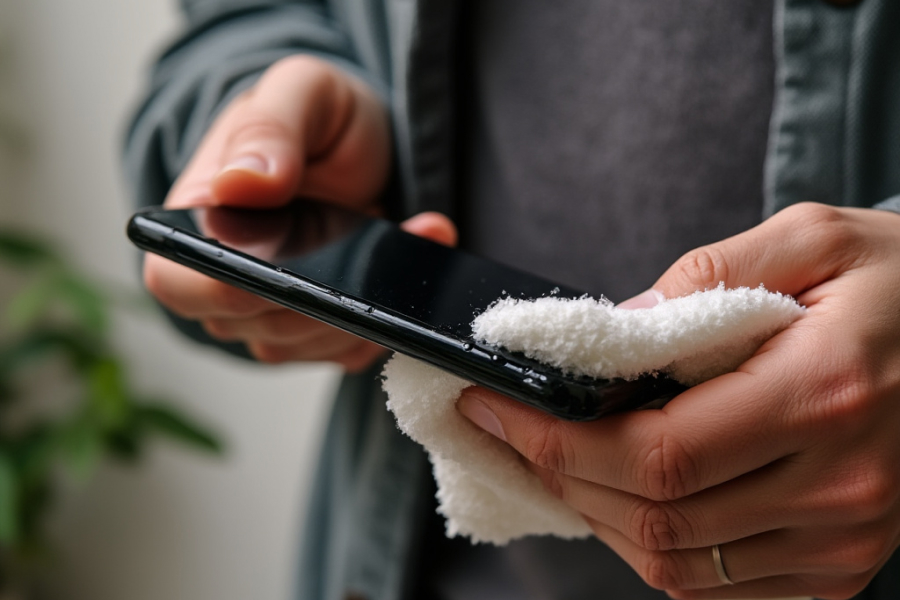
Once you have taken all these immediate measures you need to start drying up the outer surface of the phone. But, one should be very careful on how he or she manipulates the device so as not to push more water inside. I wrote a detailed guide on how to clean your phone and other devices.
-
Pat Dry: Wipe the phone with a very soft and lint free cloth or a paper towel. Do not rub the area as this will only force water into spaces within the surface that might be hard to dry, thus making the situation worse.
-
Shake Out Water: If water has gotten into the holes such as the charging port or the Headphone jack then one should shake the phone to let the water come out. Do not jerk the phone too much since this can cause parts to come off or get damaged in some way.
3. Use Absorbent Materials
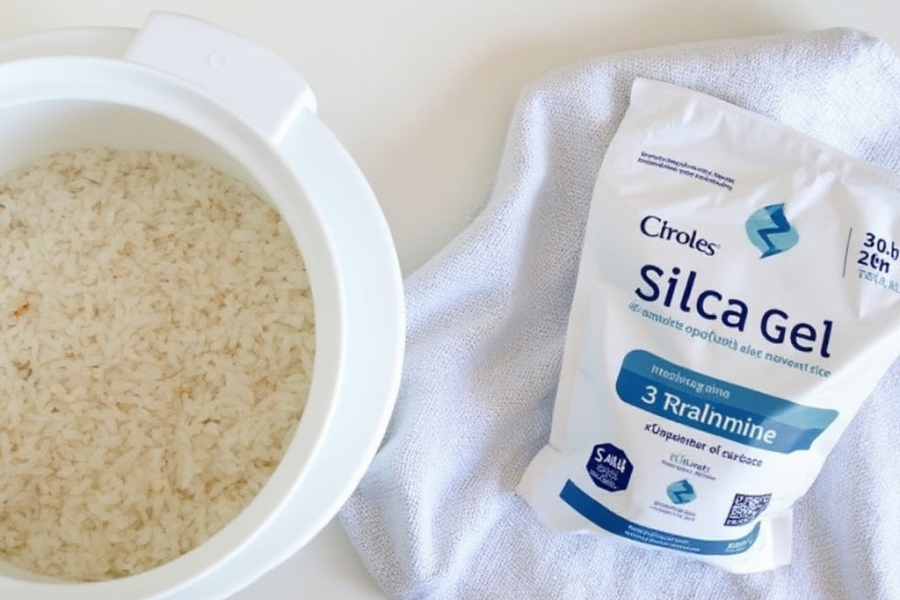
After drying the exterior, the next step is to remove moisture from the interior. I highly recommend using the Fix My Speakers app to eject water from your phone’s speaker holes. While there are varying opinions on the best method, these are some common approaches:
-
Rice or Silica Gel: One of the most known is the so-called “rice method”: you have to place the device in a container with uncooked rice. It is important to note that rice is not a cure and lacks a lot of scientific evidence behind it but it can be somewhat absorbent. A better option would be silica gel packets which are these small packets that are usually found in shoes and electronic gadgets.
-
Drying Kits: Another way is to buy a special drying kit for electronic devices from a specialized store. These kits usually contain more effective desiccants than rice and are mainly employed in the prevention of corrosion and internal damage.
4. Use a Fan or Apply Heat Gently (Warning: do at your own risk!)
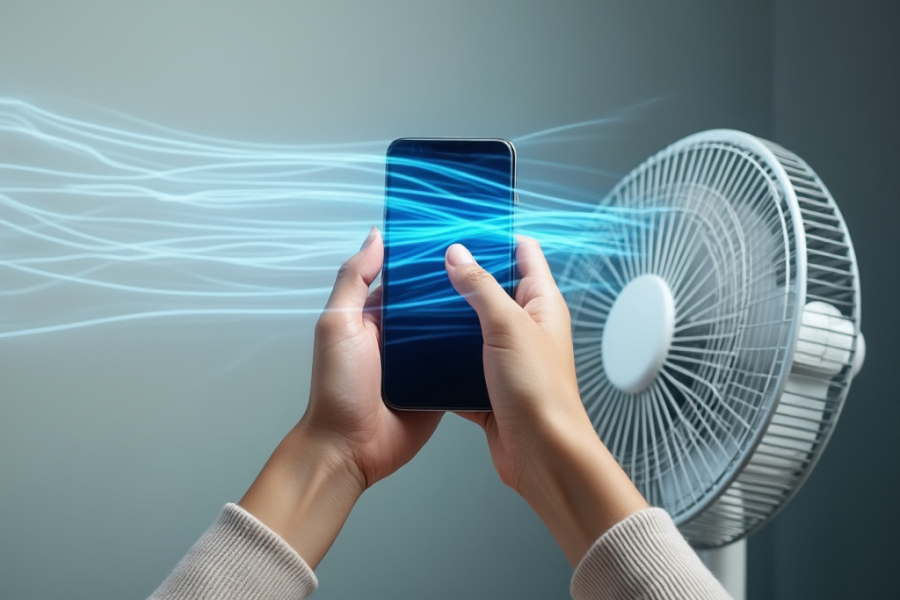
In the process of drying the phone, one has to be very careful on the heat being used.
-
Use a Fan: Hold the phone in front of a fan so that the air blows over the phone. This makes the evaporation process faster without applying much heat to the phone and this can lead to more damages.
-
Lamp or Heater: However, you can also keep the phone close to a low heated device such as desk lamp or space heater. It is also important to avoid direct heat and never put your phone too close to a heat source. The phone’s internal parts may become distorted if exposed to too much heat while the screen may get damaged.
What NOT to Do
It will be best not to use a hair dryer or to place your phone in the microwave. These methods can be very damaging, they may fry the circuits inside the phone and may even lead to an explosion at times.
5. Check for Damage Before Powering On
It is very important to make sure that your phone is almost totally dry before even trying to turn it on.
-
Inspect Ports and Openings: One should check the charging port, the headphone jack and the SIM card slot for any moisture or corrosion. Sometimes it may be difficult to see far into these cervices and you may have to use a torch to be able to do so.
-
Use Compressed Air: If you have a straw or a can of compressed air then you can use this to blow into these ports to remove any moisture or small particles that might be present. It is advisable not to blow too hard, this may result to pushing more water into the device.
6. Testing the Phone
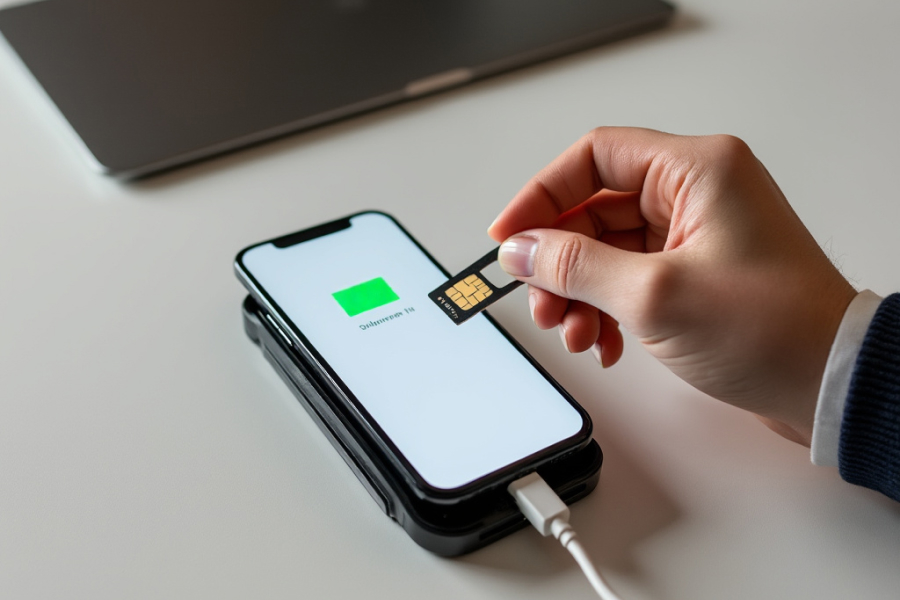
If you are sure that your phone is no longer wet, it is now time to try and power it on.
-
Reinsert Battery and SIM Card: In case you had to take the battery and the SIM card out, then you should reinsert them. In case your phone has a non-removable battery then you can skip this step.
-
Power On: Maybe, try to turn on the phone. First ensure that the item turns on then test out all the features to ensure that they are in working condition. It is also important to check for the touchscreen responsiveness, charging, sound and other basic function. If the phone behaves in a suspicious manner, turn the device off immediately. this is the best way to prevent the situation from worsening.
7. Professional Help
If your phone for instance does not switch on or is acting abnormal in a way, then you need to seek the services of a professional.

-
Visit a Repair Shop: Such tools as ultrasonic cleaners which are used to wash away water and rust from the inside of the phone can be found in most phone repair shops. They may also be in a position to repair some parts which may have been damaged such as the screen or the battery. Please remember that water damage is often classed as irreversible by most manufacturers and even when repaired the device may not work as it should.
-
Insurance Claims: If your phone has an insurance then try to check whether the insurance covers water damage or not. Liquid damage alternatively referred to as flooding may be covered under some insurance policies but many do not cover for this unless you have paid for special insurance.
8. Prevent Future Damage
There are certain measures that one can take to prevent water damage and most of the times water damage is preventable.
-
Waterproof Cases: Perhaps, it will be useful to buy a waterproof case if you often take your phone with you when swimming or have it in other conditions. A good waterproof case will safeguard your device against water and dust, which in turn increases the life of your device.
-
Avoid Risky Environments: It is recommended not to use the phone around water splashing zones for instance around pools of water, around lakes or even in the bathroom. Make sure to not place your phone on the edges of tables and countertops where there is a high chance of spilling something.
-
Regular Maintenance: It will be helpful as well to clean the ports and openings of your phone as this will ensure that no dust will be able to block the moisture in. One can say that a phone that is well taken care of will not easily get damaged.
Conclusion
Water damage does not always mean that your phone is done for but you need to act as soon as possible and take care of it. Try these tips to improve the probability of saving your water damaged phone. So even if you are lucky and your phone starts to work again after drying it then the water damage may still have some long terms consequences such as corrosion which may appear few weeks or even months later. In order to avoid such a mishap in the future, one may wish to opt for a phone with improved water-resistant features or get a strong waterproof case.
If your phone doesn’t end up being a goner after being submerged in water, then you are lucky and it is high time you learned a lesson and avoided such incidents in the future. If all else fails, you may just get a reason to go for a more water proof phone!
Dont forget to try the Fix My Speakers app :)